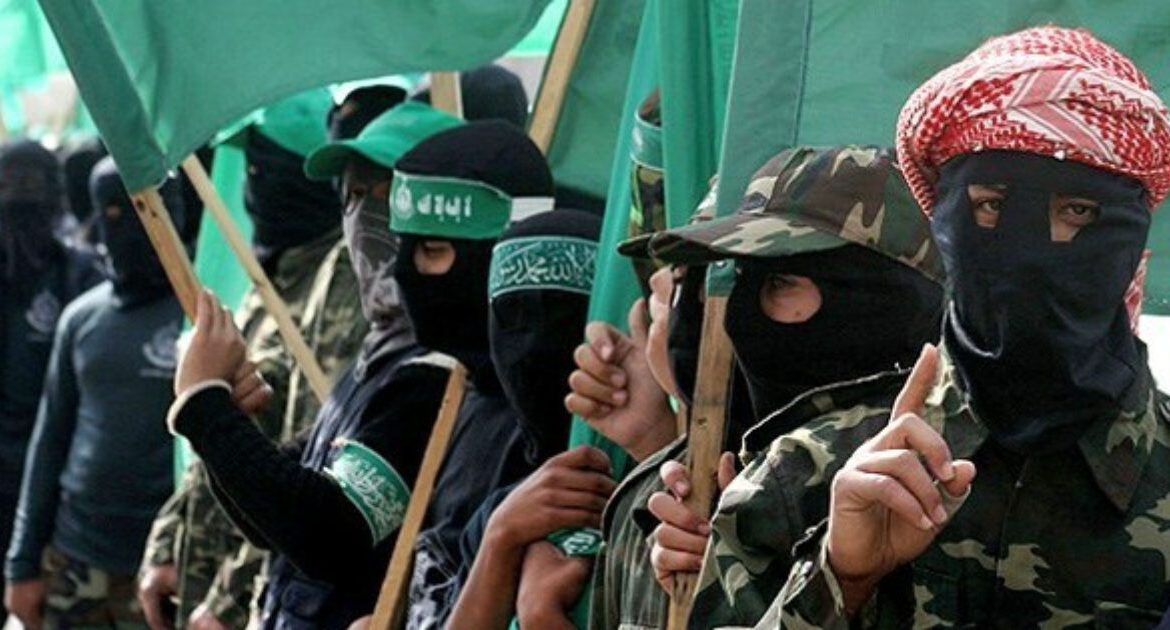
Hamas Brutally Executing Gazans: Turning on the People They Claim to Protect


Seven hooded men are forced to kneel in a Gaza street and are shot in the head at close range as a crowd looks on. In another clip, a bound man is pinned to the ground. Attackers stretch out his legs, strike the side of each knee with an axe, release the zip ties, then smash his arms and hands with a metal pipe before breaking his knees. This is Gaza today.
Hours after the final Israeli hostages were released under a U.S.-brokered ceasefire, Hamas gunmen executed more than 30 Palestinians across several neighborhoods. Those killed were accused of spying for Israel or belonging to rival armed groups. Videos circulating online show masked fighters forcing men to kneel before killing them at close range while onlookers chant.
Witnesses said detainees were beaten before being executed, as videos showed gunmen cheering afterward. Palestinian human rights organizations condemned the killings as grave crimes and violations of human rights, while Hamas-aligned factions defended them as part of a “security campaign” targeting alleged collaborators and criminals.
Hamas’s internal security unit, Radaa, claimed responsibility, saying those executed were “wanted individuals” accused of working with Israel and other offenses. The group announced a broader crackdown across Gaza, arresting opponents and reestablishing its control.
The powerful Doghmush family accused Hamas of massacring at least 28 of its members after granting them safe conduct to surrender, calling the killings unjustified and criminal. Despite international outrage, Hamas continues to enforce its rule through fear and violence. The executions are part of a wider campaign to reassert authority after months of Israeli military pressure.
Fighters from the Qassam Brigades have returned to the streets to police key routes and confront rivals, with residents reporting clashes between Hamas forces and local clans such as the Doghmush network.
According to local media and residents, mounting deaths and deprivation eroded Hamas’s support in Gaza this year. Many Gazans, speaking on condition of anonymity, say they feel betrayed by the group and are still struggling to comprehend what their lives have become since Hamas’s October 7, 2023 attack on Israel.
One resident from a refugee camp in central Gaza said the territory had become a living hell and that Hamas had led its people into it. He explained that nothing remained, that people had lost everything, and questioned what it had all been for. Others described Hamas leaders as liars, calling October 7 a dark day and blaming the group for the destruction across Gaza. Many estimate that tens of thousands of Gazans have been killed and that most survivors have lost nearly everything they owned.
Throughout 2025, anti-Hamas protests erupted across the Gaza Strip, prompting violent crackdowns. Reports indicate that demonstrators were publicly flogged, kidnapped, some still missing, and, in several cases, executed. One widely cited incident involved 22-year-old Oday Nasser Al-Rabay, who was allegedly abducted, tortured, and killed after joining protests in March. In another case the following month, gunmen tried to force an elderly man to let them launch rockets from his home; when he and his neighbors refused, the attackers opened fire, wounding several people.
At the same time, Hamas operatives have reappeared on Gaza’s streets to reassert control, with fighters from the Qassam Brigades policing key routes and moving against rivals. Residents and local sources report gunmen shooting suspected collaborators in the leg and hunting members of anti-Hamas factions associated with figures such as Yasser Abu Shabab, Hussam al-Astal, and Ashraf al-Mansi. Two of these militias have largely gone quiet, while a third has faced arrests and killings in Jabaliya. Internal security and intelligence units are said to be targeting opponents in areas vacated by Israeli forces.
Many Gazans now fear a renewed era of terror and coercion. Some acknowledge that, for the moment, Hamas remains the only organization capable of clearing rubble, regulating markets, and directing traffic. Others, however, say the group will cling to power at any cost, turning its force inward against the very people it claims to protect.
The crackdown coincides with statements that Hamas has temporary approval to manage internal security under the ceasefire. At the same time, limited Israeli drone fire and airstrikes have continued in specific incidents, underscoring the fragility of the truce. Palestinian Authority figures have condemned the killings as heinous crimes.
The larger questions remain unresolved. Hamas has not agreed to disarm, and the future governance of Gaza is still unclear. For now, the group is turning its guns inward, against the very people it claims to defend. The ceasefire went into effect on October 10, 2025.
Opinion polling shows that Hamas’s approval in Gaza dropped to 57% in 2025. This makes sense, given that the largest demographic of victims of political Islam and jihadist militants are Muslims, children, families, mothers, and fathers, who simply want peace like anyone else. This was true of ISIS, al-Qaeda, and the Taliban, and it remains true of Hamas.
One worrying concern, however, is that despite the devastation Hamas has caused, if support truly remains at 57%, that still represents more than half of Gazans. Prime Minister Benjamin Netanyahu has vowed not to allow either Hamas or the Palestinian Authority to govern Gaza once the war is over, while Hamas continues to insist it will not disarm. The future of the Strip remains uncertain as the ceasefire’s next phase, and the question of who will rule Gaza, hangs in the balance.
The post Hamas Brutally Executing Gazans: Turning on the People They Claim to Protect appeared first on The Gateway Pundit.
